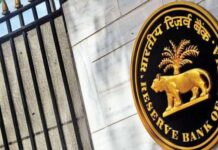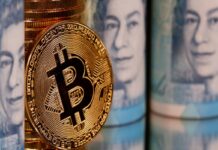Economic data suggests that the storyline has changed from pessimism to ‘green shoots’ visible in the economy.
A finance ministry report has said: green shoots have emerged after restrictions were lifted.
The narrative is slowly changing, from extreme pessimism to a cautious but positive outlook, towards the economy, as economic activities gradually pickup.
The Ministry said: the green shoots have a conducive policy environment to grow further and nudge the economy early on the path of economic recovery and growth.
It also reiterated the International Monetary Fund’s Forecast in June of a 4.5% contraction for India in Fy21
The economic slowdown and the Covid-19 pandemic saw the response from the government, in handling the situation, driven by the following 3 crucial requirements and constraints –
Firstly, keeping the population aspect of the country and the density of population in perspective.
Secondly, limiting the spread of COVID -19 infections, on account of the weak healthcare sector, a load of COVID -19 cases would have further strained the already limited and challenged infrastructure.
The national lockdown to some extent helped in controlling the number of cases and its management.
Thirdly, the Fiscal leeway available to the government and determining the duration of the lockdown.
The longer the duration of the lockdown, the more the government would spend, to keep the economy moving, support the incomes of the people as well as the businesses.
Hence, despite the risk of the coronavirus cases spreading, the only viable solution for the government was to lift the lockdown and open the economy.
The ‘green shoots’ are an obvious result of the opening of the economy, and therefore positive indications, after complete inactivity, due to the lockdown and resumption of economic activities, are to be expected.
These positive cues are being seen in power consumption, freight movement, and a minor increase in the employment ratio.
The finance ministry report said, “Early green shoots of economic revival have emerged in May and June with real activity indicators like electricity and fuel consumption, inner and intrastate movements of goods, retail financial transactions witnessing pick-up”
However, though the economic activities are showing cues of a slow rise yet, it is nowhere near the same level as last year, given this time, and therefore, it is still in a declining curve.
The report said, “the lockdown and social distancing measures have had an adverse effect on the economy as there is an unavoidable trade-off between flattening the infection curve and steepening of the recession curves”
Market experts claim the economy is said to shrink by 25% in the first quarter, and it is estimated that from the 3rd quarter onwards, recovery may start, however, it would not be enough to offset the damage done to the economy, in terms of GDP.
It is estimated that loss to the economy in terms of GDP is likely to be 10% and permanent.
During the lockdown, Small and medium enterprises, especially start-ups and companies with debt were hit the hardest, even though the RBI did take measures and credit facilities were opened.
The financial sector has been in the rough since the last few years, facing challenges, particularly PSB’s (Public Sector Banks) hit with NPA’s (Non – performing assets) at significantly higher levels.
Followed by the NBFC crises, small sector private banks found it difficult to mobilize resources, as they were perceived to have a higher risk factor.
Outlook towards various sectors.
The sector that comes out on top is the agriculture sector primarily because, even during the lockdown, its activities continued and not restricted.
Though it now faces issues in terms of lack of agricultural workforce, as compared to the other sectors it is forecast to do considerably well.
Typically, manufacturing & construction are sectors that are seen to recover fast, and since the easing of restrictions, it seeing a gradual revival.
Service Industry continues to be the worst hit and will remain weak, as the activities in this sector have not fully resumed.
However, the full opening of the sector and a 100% resumption of activities could take time owing to the COVID -19 pandemic, as the sector is most contact-oriented and given to people proximity.
MSME’S, NBFCs, and smaller banks in the private sector could find it difficult to access liquidity, access to capital may remain a problem.
The Banking sector is better placed as they have access to liquidity, but the public sector banks, need to improve their financial stability and financial structure.
Banks may face situations wherein even if they lend money, the probability of it adding on to the list of NPA’s is high.
On the other hand, if they curb lending, then the economic recovery will suffer.
Therefore, the contribution of the financial sector in the revival of the economic conditions will be limited
Is India’s Stimulus Package enough?
The RBI pumped in liquidity into the system but its impact has been minimal, with little or no significant changes in the financial conditions. India’s Stimulus Package may not be enough.
The government has two important roles to play –
first, Income support, and second, it must bridge the pandemic crises and the recovery rate.
The report also said, “India has flattened the curve to a great extent with early containment measures supported by enhanced health infrastructure.
The economy is showing signs of recovery, however, it is a delicate balance of reigning in the COVID -19 cases, as well as giving the right cues to the market, so the economy comes out of the lull and shows positive signs of recovery and growth.
It remains to be seen, the policies the government proposes for the economy, and how it will administer the much-needed booster shot to revive economic activities.
















































